Norman J. Holter
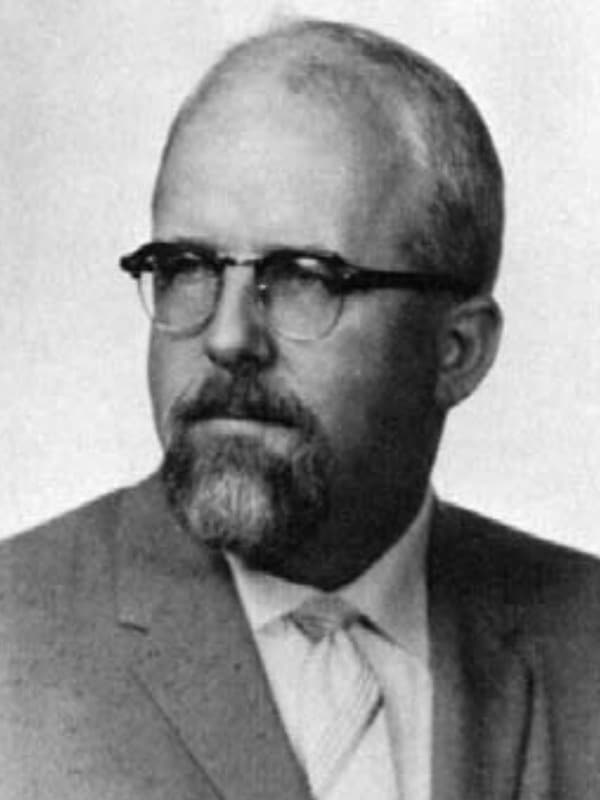
Norman Jefferis ‘Jeff’ Holter (1914-1983) was an American chemist, physicist and biophysicist
Eclectic career including heading the government research team involved in the atomic-bomb testing at Bikini Atoll; president of the Society of Nuclear Medicine; full professor of Geophysics and Planetary Physics at the University of California, San Diego; and explosive artist.
Based on his early interest in biotelemetry Holter developed ambulatory electrocardiography and electroencephalogram in 1947 – the Holter monitor – one of the greatest technological achievements in the history of modern cardiology.
Biography
- Born on February 1, 1914 in Helena, Montana
- 1938 – BA in Chemistry, University of California, Los Angeles
- 1939 – MA in Physics, University of California, Los Angeles
- 1940 – MS in Chemistry, University of Southern California
- 1940-1945 Senior physicist for the U.S. Navy’s Bureau of Ships under Commander Roger Revelle conducting research into the behaviour of ocean waves in preparation for wartime amphibious operations.
- 1947 – Founded the Holter Research Foundation; initial work on nerve stimulation in frogs and brain stimulation in rats with Dr Joseph Anthony Gengerelli (1905-2000) of UCLA
- 1951 – The Holter Research Foundation was the first organization in Montana to qualify to receive radioisotopes from the Atomic Energy Commission and offered radioisotope techniques courses for physicians to introduce atomic medicine to the state.
- 1952 – Chief scientist for the Scripps Oceanographic Institution’s (University of California San Diego) expedition called Operation Capricorn and group leader of Operation Ivy which conducted the first hydrogen bomb test in Eniwetok Atoll. Measuring wave actions and underwater disturbances caused by the explosions.
- 1954 – Joined with nine others in the Northwest to found the Society of Nuclear Medicine which was to bring physicians and physicists together in a new medical-scientific group; president 1955-56
- 1954-1956 Pre-medicine studies at Carroll College, Montana
- 1963 – Appointed to the Montana Civil Defense Advisory Council where he advocated construction of home bomb shelters
- 1965-1982 Director for the La Jolla Museum of Art
- 1972 – Studying the effects of the atomic bomb on ocean waves gave Holter the idea for an art project – “explosive art” and his “Geometry in Steel” series.
- Died on July 21, 1983 in Helena, Montana
- Awards: honorary membership to the Montana Medical Association; Harold Laufman Award of the Association for the Advancement of Medical Instrumentation (1979); honorary doctor of science degree from Montana State University
Medical Eponyms
Holter monitor (1947)
1947 – In collaboration with Dr. Gengerelli, Holter attempted to transmit biological information, primarily brain waves, by radio. Holter turned his attention from the brain to the heart because the heart’s greater voltage made the electronics easier, and because heart disease was far more prevalent than cerebral disease. Holter’s goal was “to broadcast by radio the more obvious electrophysiological phenomena occurring in humans so they could be free to do something besides lie quietly on a couch.”
Holter developed his prototype recording apparatus which consisted of a radio transmitter and batteries with a combined weight of 38kg (85 lb). The apparatus was bulky and cumbersome and could not realistically be worn by a patient. The first broadcast of a radioelectrocardiogram (RECG) came in 1949.
1952 – Working with Wilford Ray Glasscock (1925-1998), in the Medical Physics Laboratory of the Holter Research Foundation, the cumbersome system had been downsized to a 1.2kg (2.6 lb) amplifier and transmitter. With the advent of transistors, the equipment was eventually miniaturized, self-powered, and radio transmission was replaced by a magnetic tape recorder.
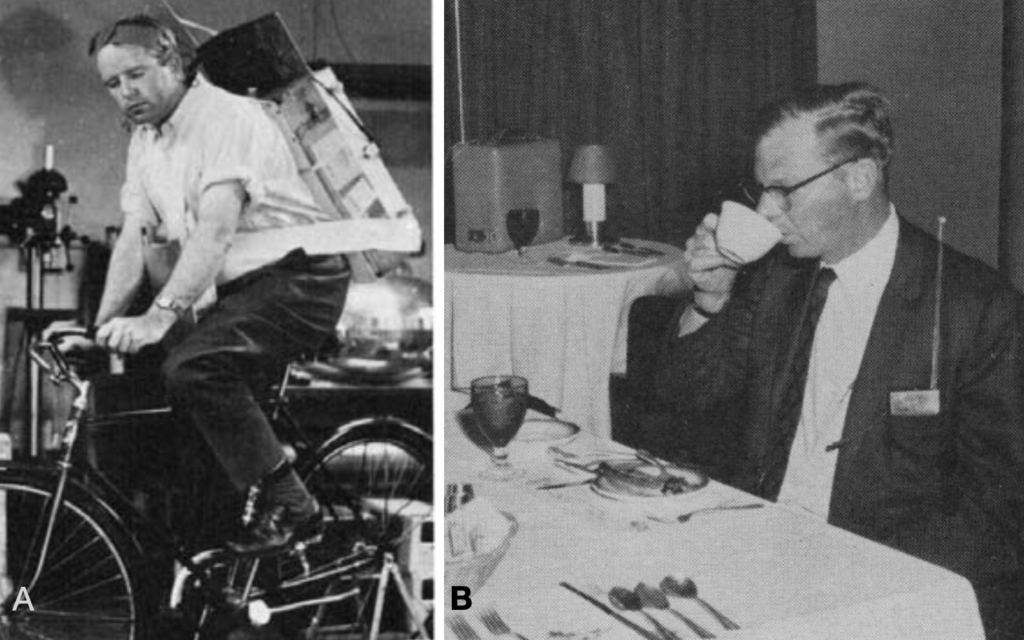
1957 – Holter developed the Audio-Visual Superimposed Electrocardiogram Presentation (AVSEP) to observe changes in ECG waveforms. ECGs could be played back, and superimposed on one another at an accelerated rate, 60 times the speed of the tape recording. By synchronizing the horizontal oscilloscope sweep with each R wave, when transient changes were detected, the ECG is recorded at conventional speed for detailed analysis. A 24 hour recording could be scanned in 20 minutes.
An arrhythmiagraph analysis unit provided rapid, quantitative, compact information on pulse irregularities.
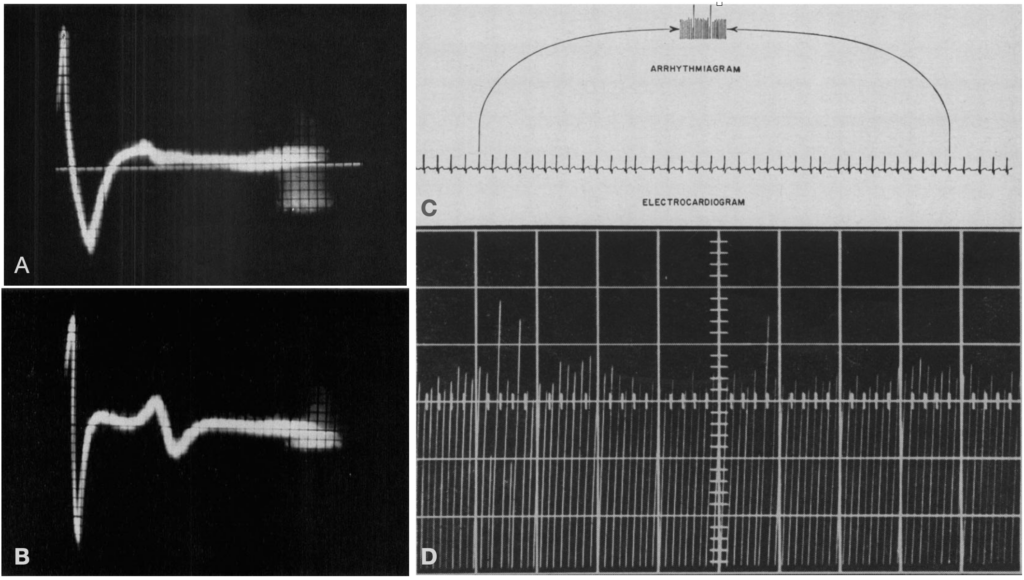
C: Schematic drawing of the arrhythmiagraph, D: typical arrhythmiagram, showing pulse time variability Holter 1961
1961 – With the advent of transistors, Holter worked alongside Eliot Corday (1913-1999) at Cedars-Sinai Medical Center in Los Angeles, Holter to develop even more lightweight, noise-free, miniature recording circuitry that could fit into small recording containers and would permit practical documentation systems that could be conveniently carried by the ambulatory patient in the course of everyday events.
Whilst in Helena, Holter casually used the new ambulatory ECG monitor to obtain a continuous ECG recording of a surgeon friend who was complaining of feeling weak with vague intermittent epigastric symptoms while becoming irritated by having to wait his turn to perform surgery. The surgeon was wearing the ambulatory ECG snd died suddenly whilst completing the operation. Holter took the data reduction recording to Corday in Los Angeles for interpretation. The ECG revealed ST segment elevations and depressions, peaked T waves and paroxysms of ventricular tachycardia.
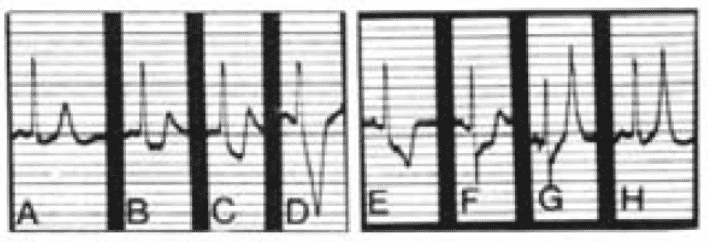
1963 – Holter began his association with Bruce Eugene Del Mar (1913-2014) (Del Mar Avionics) to manufacture and market the recorder
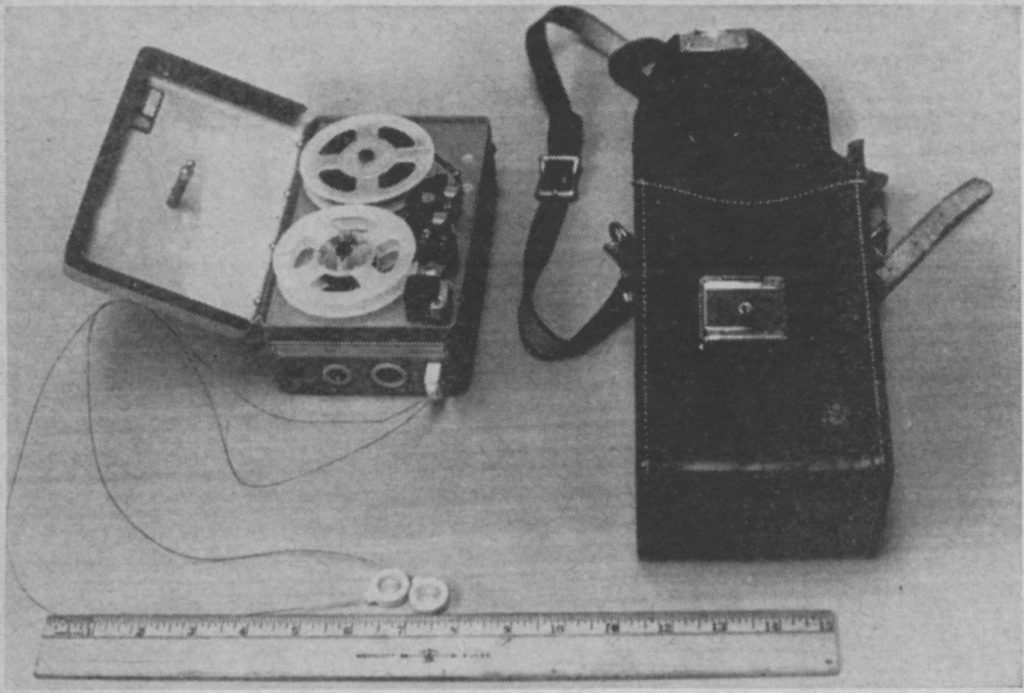
1965 – Corday et al publish the landmark paper “Detection of phantom arrhythmias and evanescent electrocardiographic abnormalities“
A series of 286 patients with perplexing and obscure cerebral and cardiac symptoms was studied
Corday 1965
with the Holter monitor. By allowing the patient unlimited access to those environmental situations which usually precipitated the distress, such as working in the garden, running, walking, arguing, etc, objective evidence was correlated with subjective symptoms. This application of electronics to clinical medicine often surprised us by providing unsuspected information for a clinical diagnosis.

Left: Holter recording of 64-year-old man with electrocardiographic evidence of myocardial ischemia provoked by sexual excitement
Right: Holter recording of 81-year-old lady with transient episodes of atrial fibrillation, premature ventricular systoles, and run of symptomatic ventricular tachycardia. Corday et al 1965
1968 – Further refinements of equipment led to the creation of a ‘Holter minimonitor’ being the ‘size of a cigarette package’ Commercial production of the Holter minimonitor AVSEP, Jr. began in 1969.
Major Publications
- Holter NJ, Generelli JA. Remote recording of physiological data by radio. Rocky Mt Med J. 1949 Sep;46(9):747-51.
- Glasscock WR, Holter NJ. Radioelectroencephalograph for medical research. Electronics 1952; 25: 126
- Holter NJ. Radioelectrocardiography: a new technique for cardiovascular studies. Ann N Y Acad Sci. 1957 Aug 9;65(6):913-23.
- Holter NJ. New method for heart studies. Science. 1961 Oct 20;134(3486):1214-20.
- Gilson JS, Holter NJ, Glasscock WR. Clinical observations using the electrocardiocorder-avsep continuous electrodiographic system. Tentative standards and typical patterns. Am J Cardiol. 1964 Aug;14:204-15.
- Holter NJ. The development of Holter electrocardiography. Clin Eng. 1980 Nov-Dec;8(6):65-7.
References
Biography
- Brucer M. Norman “Jeff” Holter, (1914–1983), a Historical Note and, as It Must be, an Obituary. Journal of Nuclear Medicine 1984; 25(1): 132-133
- Krochak C. Norman ‘Jeff’ Holter; The power of an idea. The Prospector (Helena, Montana), 07 Oct. 1996
- Holter Research Foundation 1914-1985
- Bibliography. Holter, Norman J. 1914-1983. WorldCat Identities
Eponymous terms
- Corday E, Bazika V, Lang TW, Pappelbaum S, Gold H, Bernstein H. Detection of phantom arrhythmias and evanescent electrocardiographic abnormalities: use of prolonged direct electrocardiocording. JAMA. 1965 aug 9;193:417-21. [Holter monitor]
- Corday E. Historical vignette celebrating the 30th anniversary of diagnostic ambulatory electrocardiographic monitoring and data reduction systems. J Am Coll Cardiol. 1991 Jan;17(1):286-92.
- Barold SS. Norman J. “Jeff” Holter-“Father” of ambulatory ECG monitoring. J Interv Card Electrophysiol. 2005 Nov;14(2):117-8.
- At the Heart of the Invention: The development of the Holter Monitor. NMAH 2011
- Ioannou K, Ignaszewski M, MacDonald IA. Ambulatory electrocardiography: The contribution of Norman Jefferis Holter. BCMJ 2014; 56(2): 86-89
- Makarov LM. [To the centennial of Norman Holter (1914-1983)]. Kardiologiia. 2015;55(1):59-61.
[cite]
